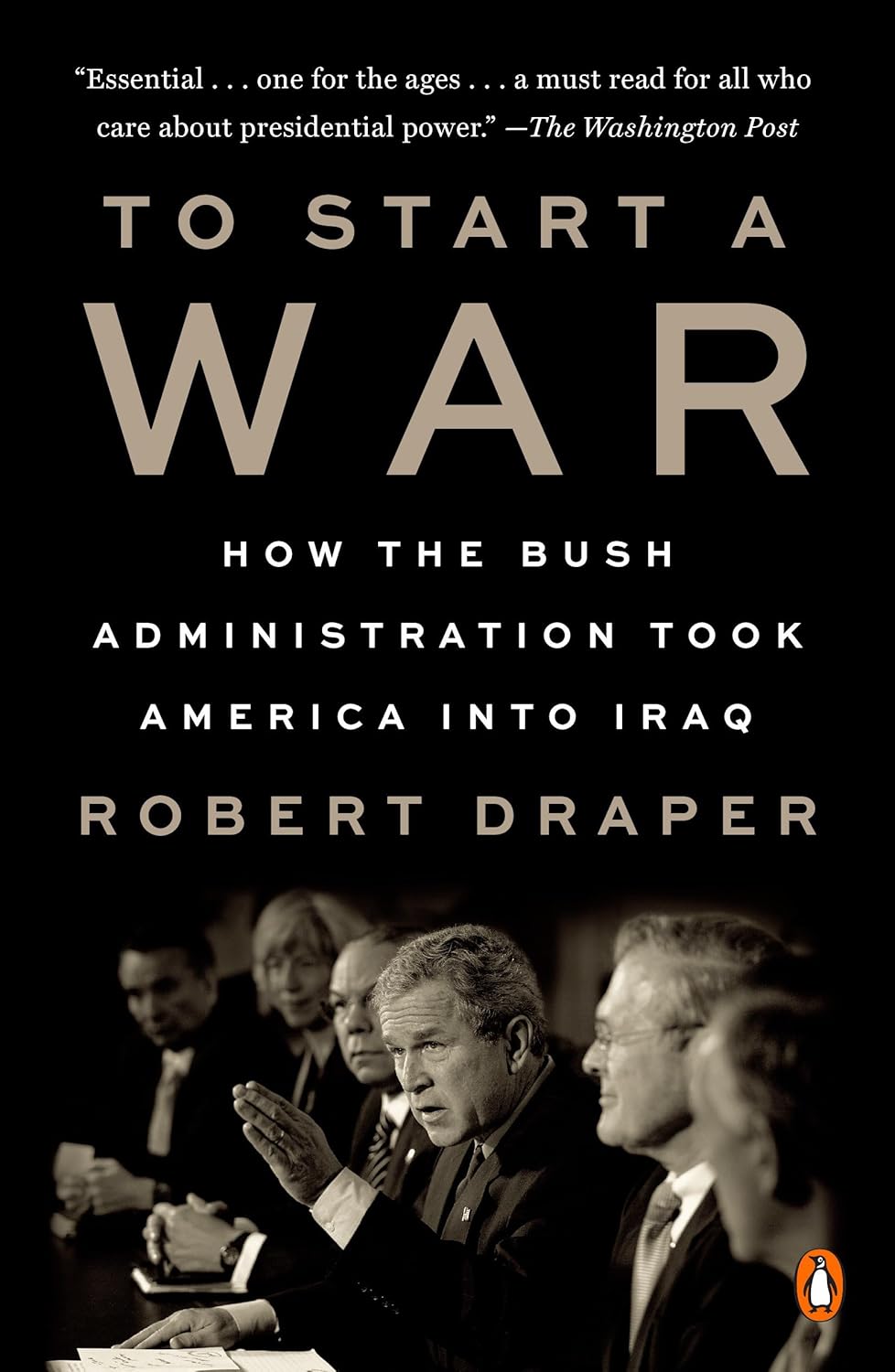The pivot came with the terrorist attacks of September 11, 2001. There probably wouldn’t have been an invasion of Iraq without the fear and paranoia they aroused: many feared another attack at any moment. But how did Bush and his top advisers come to believe that Saddam, the secular Sunni leader of Iraq, was conspiring with Osama bin Laden and the other fanatical Islamists who attacked the Twin Towers and the Pentagon (a notion derided by intelligence officials as “science fiction”) or that Saddam was developing weapons of mass destruction—nuclear, chemical, and biological—with the possible aim of providing them to al-Qaeda?
This is the main riddle that Robert Draper, a deft political journalist for The New York Times Magazine, aims to solve in To Start a War. Countless scribes before him have posed the same question; none of them unearthed definitive answers. Draper leaves some gaps as well, though he comes closest to unraveling the central mysteries; he even dredges up reams of new information—not only shiny tidbits but fresh insights and revelations.
Draper’s central insight is to place George W. Bush at the center of the action. When it came to invading Iraq, Bush truly turns out to have been “the decider,” as he once described himself. And in those instances when others took charge, his style of decision-making was to let them, whereas most other presidents would have asked questions, mulled the options, perhaps convened a meeting of the National Security Council (NSC) to weigh the pros and cons of a proposal. Draper convincingly shows that, under Bush, there was “no ‘process’ of any kind,” at any stage of the war, from the decision to invade to figuring out how post-Saddam Iraq should be governed.
At some point, Bush decided that “Saddam is a bad guy,” so “we need to take him down,” and the path to war was paved from there. Bush is not among the more than three hundred sources whom Draper says he interviewed for this book (among them roughly seventy intelligence officials), but the two men spent many days together in the late 1990s for a Texas Monthly profile, which evolved into a book-length portrait of Bush, reported and written while he was president, and during that time Draper, a fellow Texan, saw a figure, in formation and in action, that few other journalists glimpsed so close up.2
